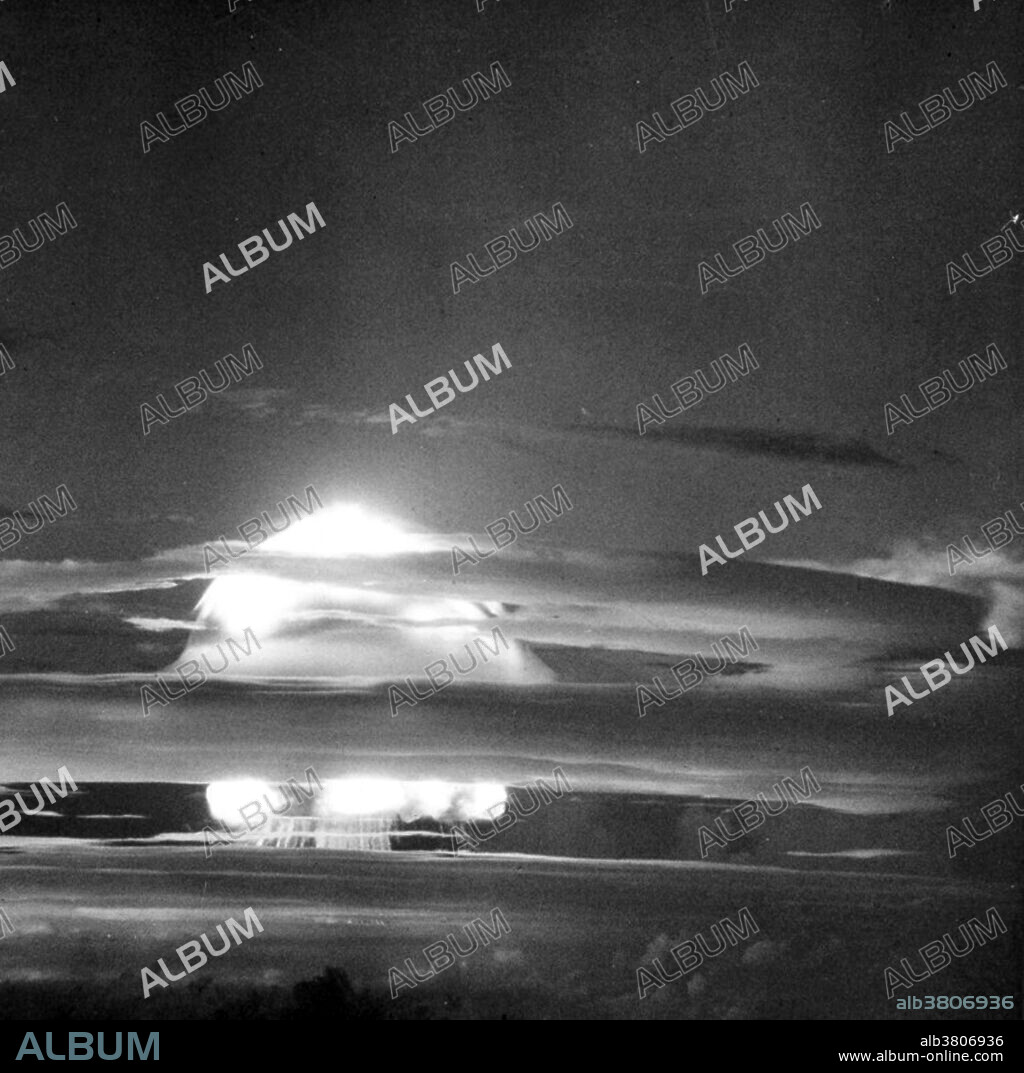alb3806936
Operation Ivy MIKE, 1952

|
Añadir a otro lightbox |
|
Añadir a otro lightbox |



¿Ya tienes cuenta? Iniciar sesión
¿No tienes cuenta? Regístrate
Compra esta imagen.
Selecciona el uso:

Título:
Operation Ivy MIKE, 1952
Descripción:
Ver traducción automática
Mike, at a height of approximately 12,000 feet - 50 miles from the detonation site. Two minutes after Zero Hour, the cloud rose to 40,000 feet. Ten minutes later, the cloud stem had pushed upward about 25 miles, deep into the stratosphere. The mushroom portion vent up to 10 miles, and spread for 100 miles. Operation Ivy was the eighth series of American nuclear tests. Its purpose was to help upgrade the U.S. arsenal of nuclear weapons in response to the Soviet nuclear weapons program. The two explosions were staged in late 1952 at Eniwetok Atoll in the Pacific Proving Ground in the Marshall Islands. The first Ivy shot, Mike, was the first successful full-scale test of a multi-megaton thermonuclear weapon (hydrogen bomb) using the Teller-Ulam design. Unlike later thermonuclear weapons, Mike used deuterium as its fusion fuel, maintained as a liquid by an expensive and cumbersome cryogenic system. It was detonated on Elugelab Island on October 31, 1952, yielding 10.4 megatons, almost 500 times the yield of the bomb dropped on Nagasaki. Eight megatons of the yield was from fast fission of the uranium tamper, creating massive amounts of radioactive fallout. The detonation left an underwater crater 6,240 feet wide and 164 feet deep where Elugelab Island had been.
Crédito:
Album / Science Source / NNSA/NV Field Office
Autorizaciones:
Modelo: No - Propiedad: No
¿Preguntas relacionadas con los derechos?
¿Preguntas relacionadas con los derechos?
Tamaño imagen:
3600 x 3586 px | 36.9 MB
Tamaño impresión:
30.5 x 30.4 cm | 12.0 x 12.0 in (300 dpi)
Palabras clave:
1952 • ACONTECIMIENTO • AMERICA • AMERICANO • ARMA NUCLEAR • ARMA • ARMAS • BLANCO Y NEGRO • BOMBA ATOMICA • BOMBA NUCLEAR • CIENCIA • CONFLICTO BELICO • DETONACION • ESTADOS UNIDOS DE AMERICA • ESTADOS UNIDOS • FAMOSA • FAMOSO • GUERRA • HISTORIA • HISTORICO • HONGO ATOMICO • HONGO NUCLEAR • IMPORTANTE • INVESTIGACIÓN Y DESARROLLO • INVESTIGACION • NUBE DE HONGO • OCEANO PACIFICO • S. XX • SIGLO XX • SÍTIO • TECNOLOGÍA • TECNOLÓGICA • WAR • WEAPON
 Pinterest
Pinterest Twitter
Twitter Facebook
Facebook Copiar enlace
Copiar enlace Email
Email
